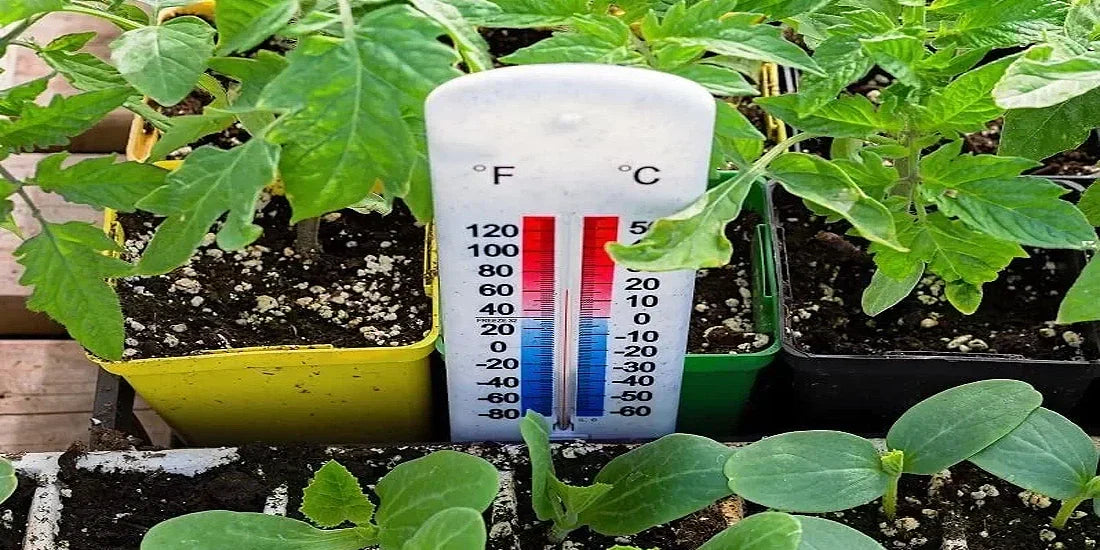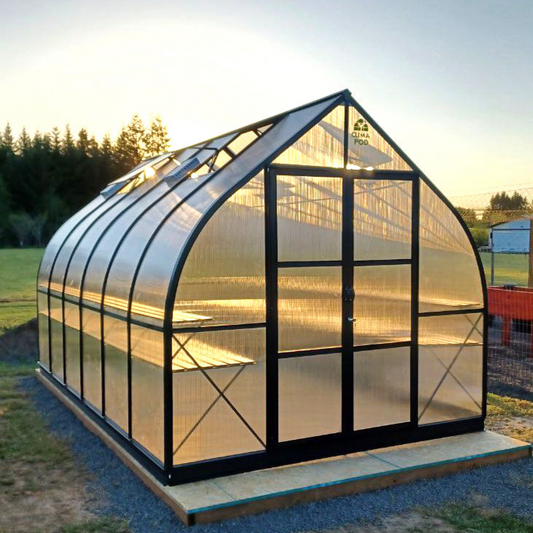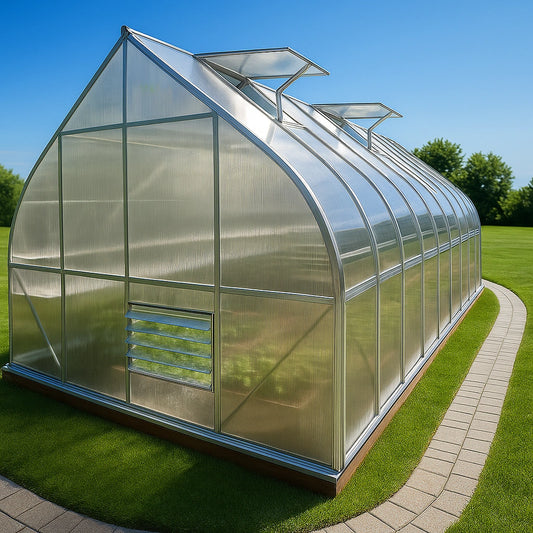
Smart Ways to Protect Greenhouse Plants from Overheating
How to Protect Greenhouse Plants from Overheating
Are your greenhouse peppers, eggplants, or tomatoes wilting, turning yellow, or showing stunted growth, even though you're watering and feeding them regularly? It might not be a nutrient or water issue at all. The real culprit could be excess heat and poor air circulation. Let’s break down how to protect your greenhouse crops from overheating and heat stress.
Optimal Greenhouse Temperature and Humidity
During summer, greenhouse temperatures can easily climb to 105–115°F (40–45°C). But here's the problem: many crops experience pollen sterilization and stress when the air reaches just 85–95°F (30–35°C).
Ideal ranges vary by crop:
- Cucumbers: 77–82°F daytime, 64–70°F night, 75–85% humidity;
- Tomatoes: 68–72°F day, ~64°F night, 60–70% humidity;
- Peppers: 77–82°F day, 68–73°F night, 65–75% humidity;
- Eggplants: similar temps as peppers, but prefer drier air (50–60%).
Mixed planting? Be cautious: different crops have different microclimate needs. Grouping them together often reduces yield and increases stress.
How to Cool Down a Greenhouse in Summer
Opening the door may help, but in July’s blazing sun, passive cooling is rarely enough. Consider these more effective methods:
Paint for Heat Reflection
A traditional method is coating the greenhouse’s roof and upper walls with a light-reflective mixture (like lime or clay-based whitewash). This helps reduce solar gain, especially for glass or polycarbonate structures. Just keep in mind:
- Avoid painting the outside if frequent rain is expected, it’ll wash off and affect the surrounding soil.
- Apply inside before planting, and wash it off in fall during cleanup.
- This isn’t suitable for plastic film greenhouses.
Artificial Shade Covers
You can shade the hottest sides (typically south or east) with shade cloth, burlap, or spunbond fabric. Commercial shade nets with UV resistance are ideal: they’re durable, neat, and easy to install.
For DIY solutions, use frames with removable covers or temporary structures. These allow seasonal flexibility and targeted coverage.
Living Shade (Green Canopies)
This is a natural approach: plant vines or fast-growing climbers along the greenhouse’s outer walls (or even inside, if space allows). They provide dappled light and help reduce interior temperatures.
Caution: dense foliage can also block too much light during cloudy days, so monitor how your crops react.
Improve Ventilation
Cross-ventilation is the cheapest and most crucial fix. At a minimum, your greenhouse should have:
- Vents on opposing walls
- Roof vents if possible
- Openable doors/windows
Automatic vent systems with thermostats are worth considering for convenience, especially if you’re not always around.
Add Airflow with Fans
If you have limited vent options, install a basic electric fan near the ground or rear wall to keep air moving. Pros:
- Prevents stagnant air and helps reduce heat
- Enhances pollination in some cases
Cons:
- Increased energy costs
- Extension cords can be a hassle, so consider solar options for smaller setups
Use Water as a Thermal Buffer
Large water containers (barrels, jugs, or even 2L bottles) absorb heat during the day and release it at night, softening temperature swings.
Bonus: use these barrels to prep compost tea, settle irrigation water, or dissolve dry fertilizers safely.
How to Increase Humidity in the Greenhouse
Maintaining proper humidity is just as critical as temperature. Too low? Leaves dry and curl. Too high? Fungal disease risks spike and fruit set suffers.
Here’s how to increase it safely:
Water the Walkways
Avoid overwatering your crops — instead, spray or water the paths between rows. This raises humidity gradually and evenly. Water in the morning to reduce night-time dampness, which can encourage mold.
Try Misting or Steam
Cold steam generators or misting systems are effective for crops like cucumbers. Just don’t use them for humidity-sensitive plants like tomatoes — they’ll suffer.
Even a spray nozzle attached to a garden hose can work if you mist the air and surfaces briefly a few times a day.
Final Thoughts
Protecting your plants from overheating is less about gadgets and more about balanced environmental control. Use passive methods first: ventilation, shading, and water-based solutions. Monitor plant behavior, and make small adjustments often.
Plan ahead when building or upgrading your greenhouse — but if your crops are struggling now, it’s not too late to make changes.
If your greenhouse is overheating, act fast — heat damage is often irreversible, and your harvest depends on it.











